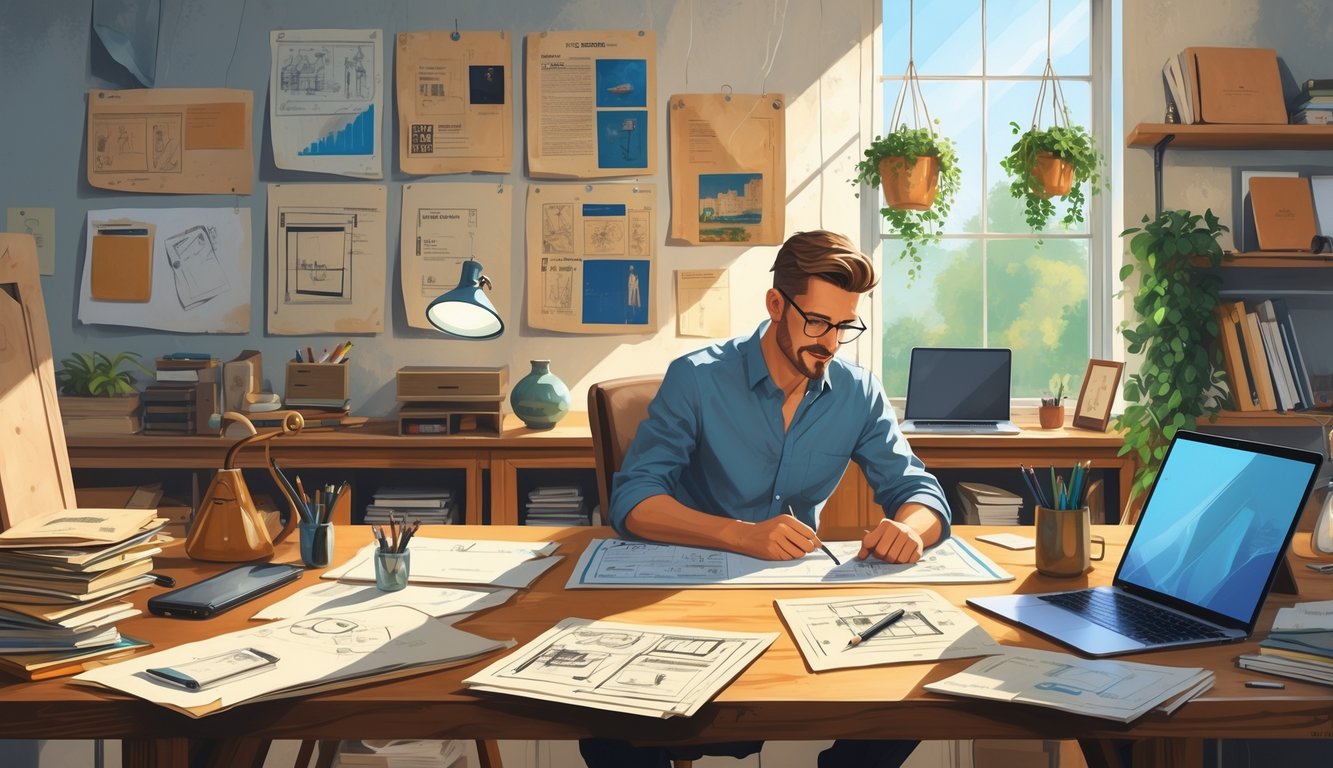
Exploring Cultural Heritage and Environmental Impact
Trying to fix up old stuff? It’s a mess. Not even halfway through the paperwork and already everyone’s yelling about “historic narratives” and “contextual integration.” Meanwhile, you can’t even find matching bricks, and don’t get me started on contractor prices. Preservation is a headache—let’s not pretend otherwise.
Preserving Cultural Significance
What really gets me is people thinking reviving heritage is all velvet ropes and fancy reveals. Nope. The real grind is just keeping the story straight. Cultural heritage—Edwardian houses, Deco cinemas, prefab post offices—gets picked apart by tourists, but locals? They barely notice. Read in the Journal of Cultural Heritage that preservation only works if you adapt. Otherwise, you’re left with a ghost museum.
My actual experience: repainting in “approved” colors, hunting down era-specific glass, filling out grant forms that disappear into the void. Last winter, a heritage inspector told me, “It’s not about perfect authenticity—it’s about value now.” Wish someone had said that sooner. Cultural consultants wanted to turn my storage closet into a “community interpretation space.” I’d rather just let people see the mop buckets. At least that’s real.
Promoting Environmental Benefits
And the “green” revival? A joke, half the time. It’s not just about recycled bricks or carbon footprints—why does my neighbor get a solar grant and I have to hide mine? Reality: reusing buildings can slash construction waste by 70% (Cambridge study), unless you blow your budget on asbestos removal.
Last year, I had to use sheep’s wool insulation because “traditional” was the spec—itchy, smelled like barn, not fun. Some consultant called heritage sites “ecological exemplars.” Sounds like a greeting card. In reality, the rules are so tangled that sometimes you’re lucky to get a passing grade on your energy audit. At least you don’t have to bulldoze history for “sustainability”—just don’t ask me about LEED points unless you want to hear me laugh.
Supporting Local Economies Through Creative Work
Honestly, I keep hearing the same thing: shop local or get lost in the algorithm. Maybe that’s true? Maybe not. I’m not sure anyone’s got a handle on how to actually move the needle for the neighborhood, but I keep trying. Spreadsheets say one thing, my gut says another, and sometimes I just want to avoid another shipping meltdown. Everything I’ve learned—if you can call it that—comes from a mix of screwups, city grants, and that time I accidentally exploded a kiln. (Ceramics: not for the impatient.)
Sourcing Local Materials
So, there I am, desperately searching for Baltic birch. Of course, nobody within fifty miles has any. I pivoted—grabbed reclaimed fir from a demolition crew down the street. The stuff looked ancient, but it held up better than half the new lumber I’ve used. I get why people roll their eyes at the whole “support local” chant, but when I hand cash to the guy at the lumberyard or haggle for indigo at the farmers’ market, I actually see the money stay in town. Not just a slogan.
Stats? Sure, the arts sector apparently outpaced GDP by 4% in 2021 (source), but that doesn’t really explain why the hardware store clerk knows my name now. Maybe I buy too many screws.
Neighbors spot their uncle’s old barn wood in my stuff and suddenly, everyone’s bidding higher. People love a backstory. I don’t even have to finish everything—sometimes just mentioning the origin gets buyers excited. And when a shipment goes sideways? I walk over and grab what I need. No DHL drama. Way less stress.
Partnering with Local Artisans
Let’s be real: collabs are chaos. I teamed up with Sam the glassblower—he only takes napkin sketches, and I burned half of mine by accident. Still, we finished on time because we both live nearby. Argued about finishes, made up over coffee. That’s how it goes.
It’s not just about splitting profits or sharing tools. Sometimes your buddy drags you out to see a weird maple slab, and suddenly you’ve got a new project. More gigs pop up. Local partnerships shake things up, and honestly, the work feels less generic. Art Locale says it better than I can—local means variety, not mass-produced boredom. When something breaks, you show up with donuts and fix it together. These rough alliances beat cold emails every time.
Maximizing Results from Revived Projects
Paint’s barely dry and already someone’s yelling, “Share it!” Is that ever the right call? Who knows. I swear, nobody’s ever “done” with a project—they just get tired of looking at it.
Showcasing Finished Projects
Relaunching an old project? Feels weird. Half the time I’m wondering if anyone remembers the first version. I once posted a tweaked illustration and, out of nowhere, engagement doubled. Total fluke. Sometimes it flops.
Platforms like CreativeLive keep telling everyone to reframe old work for today—use portfolio sites, socials, whatever. I tossed a half-finished typeface on Behance with some before-and-after pics, plus a rant about what software I used. Turns out, people eat up that process stuff. Not just the “after” shot. If you believe the data (63% say behind-the-scenes boosts visibility), maybe showing your mess is smarter than pretending you’re perfect.
Turning Revivals into Ongoing Success
Here’s what bugs me: there’s no formula for making an old project blow up. Anyone who says otherwise is selling something. Lately, I just weave old ideas into my regular work—podcast here, workshop there. Same core, new spin.
LinkedIn “experts” (whatever that means) say you should know why you’re reviving something, then ride that momentum. Weirdly, sometimes an old essay flops until I mention it in a podcast, then suddenly clients want more. No single path, just keep turning scraps into offers or collabs. If it’s not making money, maybe it’s just therapy. Either way, keep recycling. The stuff that sticks? Never what I expect. Save every draft—you’ll need it later.



